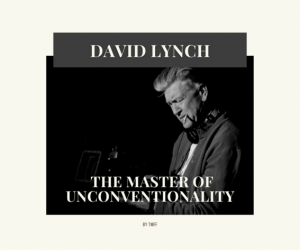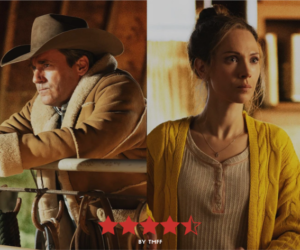Let’s try out a little exercise this week. Take a pencil and a piece of paper, then proceed to think about your favourite film in the whole wide world for a minute. Well, it doesn’t really have to be your favourite one – simply think of any film which has a clear protagonist or group of protagonists, and try to visualise its defining elements: not only the plot, but also the variety of key scenes with significant and quantifiable emotional impact. Done? Good.
Now pick up that pencil and draw a simple graph: the X-axis will be the chronology of the story, while the Y-axis shall represent the spectrum of your chosen protagonist’s experience, ranging from ‘sunshine and rainbows’ to the ultimate doomsday scenario: ‘completely, irreversibly and utterly fuc’ ‘we seem to find ourselves in a bit of a pickle’. With a neutral ‘oh’ somewhere in the very middle of the axis. The shape of the curve you’ll end up drawing will represent your selected character’s story arc.
This is what Kurt Vonnegut, in his completely charming and humorous manner, suggested quite a few decades ago. Last year, a group of Australian and American researchers attempted to build upon Vonnegut’s initial work, and ended up with a computer algorithm which does the graph-drawing itself, based on a number of variables that it encounters throughout the story. While the procedure would most likely be largely irrelevant for most of us, the thought that you can group virtually any story (except Primer, nobody can group Primer into any kind of arc drawn alongside two variables, what a ludicrous idea) into six core types of narrative should present considerable interest from a storytelling point of view.
Riches to Rags (fall)
This type of story ends with the protagonist pretty much worse off than how he started – the fall might be gradual, or it might happen all in one go – but there’s no going back from it. Good examples could be Seth Brundle from David Cronenberg’s The Fly and Jasmine Francis from Woody Allen’s Blue Jasmine.
Rags to Riches (rise)
Ah, the classic underdog story, which is one of the most utilised frameworks out there due to its success with the general public. Such a plot’s ending would find its main character faring relatively better than when everything started. Jamal Malik from Danny Boyle’s Slumdog Millionaire or Django from Quentin Tarantino’s Django Unchained are the lucky lads in this case.
Man in a Hole (fall, followed by rise)
In this case, something bad initially happens to the main character, and as a result, he or she ends up in quite a problematic state – the aforementioned pickle. However, they successfully navigate their way out of the less than rosy status quo, and end up significantly better than at the beginning of the story. Alvin Straight from David Lynch’s atypically simple but still majorly moving A Straight Story, as well as, interestingly enough, the indirect state of the accused from Sidney Lumet’s 12 Angry Men are both decent candidates for this particular arc.
Icarus (rise, followed by fall)
We’re presumably all familiar with the myth of Icarus, which happens to be quite a vivid representation of this category – as the Greek craftsman’s son enjoys an increasingly beautiful view during his ascent, his wax wings start to melt due to the sun’s proximity, and it isn’t long until he realises the likely outcome of his flight. Up, then down, just like William Wallace from Mel Gibson’s 1995 masterpiece, Braveheart, or Jordan Belfort from Martin Scorsese’s The Wolf of Wall Street.
Cinderella (rise, followed by fall, followed by rise)
Also known as the ‘Boy Meets Girl’ scenario, where the main character finds something wonderful, briefly loses it, and subsequently gets it back, this is a rather established framework for most romances or animated films. The 1950 adaptation of the famous folk tale of Cinderella is the obvious choice in this case – and with the perfectly acceptable risk of being labelled a fanboy, I’ll provide you with the added wonderful enjoyment of watching Kurt Vonnegut break down the plot relative to Cinderella’s character. My own example would perhaps be Charlie Kaufman’s The Eternal Sunshine of the Spotless Mind.
Oedipus (fall, followed by rise, followed by fall)
A wee bit more sparsely used, this particular framework’s definition is again rooted in Ancient Greek mythology, this time revolving around the character of Oedipus. It involves two downward-spiralling directions flanking an upward-sloping materialistic or emotional trend. This is quite adequately portrayed by Gatsby from Scott Fitzgerald’s novel The Great Gatsby, played by both Robert Redford (1973) and Leo di Caprio (2013) – whichever of the two you prefer. Or, getting back to Woody Allen’s work one more time, Cecilia from The Purple Rose of Cairo can likewise make the list with relative ease.
Of course, a human-determined curve, as opposed to a computer-generated one, would likely be mediated by personal subjectivity – namely, how each action or emotion is interpreted and classified on a case-by-case basis. Not everything is either black or white, and multiple layers of juxtaposed meanings might make this entire evaluation a rather daunting task. However, for the purpose of the experiment, if we try to keep matters simple and delve away from the finer philosophical issues such as how to define a certain term, I strongly believe that we can learn quite a bit about storytelling by breaking down plots and drawing corresponding lines. Add the fun factor into the mix, and it’s undoubtedly a worthy endeavour!
















